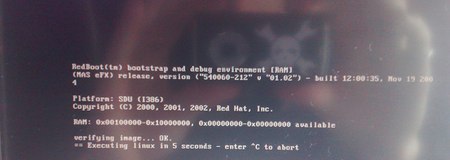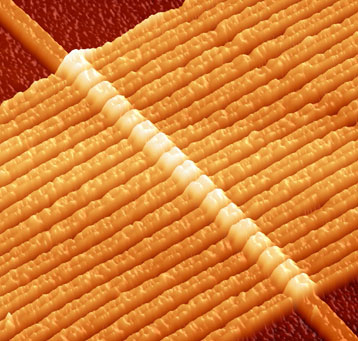
[les robots] had a defective Eye-Fi card on his hands and when a replacement was sent, he was told to destroy the original. What better way to ‘destroy’ something than opening the case? The Eye-Fi is an SD card with a builtin WiFi radio so it can upload images while remaining in camera. One version uses Skyhook’s location service to geotag photos. You can see a few photos of the dismantled card on Flickr. The board is manufactured by Wintec. The wireless side is handled by Atheros’ ROCm, the same low power Radio-on-Chip module you would find in a mobile phone. The flash memory comes from Samsung and the antenna is along the back edge, where it has the best chance of getting signal.















